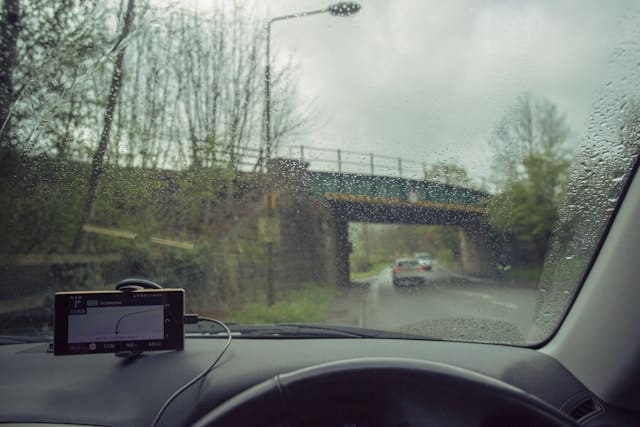A routine drive can become complicated when conditions shift faster than reflexes can handle. Fog rolling in, water pooling on pavement, or a sudden construction merge can make legal speed limits misleading. Officers frequently cite drivers for “Too Fast for Conditions” when surroundings demand slower judgment, making the difference between technical compliance and genuine safety hinge on adaptability rather than posted signs.
The impact of such a citation extends well beyond paying a fine. Insurance carriers, licensing boards, and even employers often view it as a signal of heightened risk. For commuters, commercial drivers, and anyone managing unpredictable traffic, clarity matters. Knowing how the charge is defined—and how to respond—helps preserve both personal records and long-term opportunities tied to safe and responsible driving.
Defining the Charge in Plain Terms
Headlights vanish into fog on a two-lane road. “Too Fast for Conditions” applies when speed proves unsafe for visibility, traction on ice or standing water, surrounding traffic, or roadside hazards, even if the vehicle stayed under the posted limit. Officers weigh skid marks, vehicle sway, witness statements, and scene clues, so outcomes differ by judgment and local practice.
Speed limits mark a ceiling, not always a safe pace. Proving reasonableness often requires context-specific evidence. A speeding ticket lawyer may suggest weather logs, nearby traffic-camera frames, or dashcam clips with timestamps to strengthen a defense.
Situations That Commonly Trigger the Citation
Rain pooling on an overpass makes steering uncertain, while coastal winds can scatter sand that robs tires of grip. Bridges and shaded curves freeze first, concealing slick patches that leave little time to react. In dense traffic, a single hesitation compounds quickly, and construction zones narrow margins further when speeds stay unadjusted. Even ordinary conditions can shift suddenly, transforming routine travel into a test of timing and restraint.
Police often infer unsafe speed from scattered clues: skid marks, sudden swerves, or guardrail impacts. Context matters—road surface, posted warnings, and changing weather all frame the officer’s judgment. A driver who documents shifting conditions or recalls recent warnings may strengthen their case later. Recognizing these triggers before they escalate remains the surest way to avoid a citation and the long consequences it carries.
The Real-World Consequences of a Conviction
The financial sting of a conviction often lingers longer than the fine itself. Insurance companies raise rates after even one citation, and points added to a license can accumulate into suspension risk. Employers in the transportation sector may review records and assign route restrictions, cutting into earnings and career options.
A related crash compounds the stakes: larger fines, civil liability, and extended proof-of-responsibility requirements follow. Multiple entries on a driving record shrink the chances of forgiveness programs or hardship licenses. For many, the impact reaches beyond penalties into long-term financial and professional strain.
Practical Steps to Take After Getting the Ticket
On a rainy shoulder, small details matter more than the flashing lights. Read the ticket closely for charge language, location, and notes about conditions. Badge numbers, statutes, or mention of skid marks can shape the next steps. Photographs taken before leaving, along with witness names, anchor the scene in evidence rather than memory.
Local counsel helps translate paperwork into strategy. In many jurisdictions, requesting traffic-camera footage, subpoenaing dashcam files, and securing timestamped weather logs strengthen negotiations. A concise packet of labeled records builds credibility, turning preparation into leverage when contesting the charge.
Driving Habits That Prevent the Charge
Sunset glare on a busy boulevard can erase lane markings. Modifying driving habits lowers the odds of a “Too Fast for Conditions” citation: reduce speed when visibility dips, even below the posted limit, keep extra space behind other vehicles, and adjust speed smoothly as road grip changes to avoid abrupt braking.
On wet bridges or in sudden squalls, braking mid-corner often causes a slide; slow before corners and downshift to add engine braking when useful. Longer following distances buy reaction time in dense traffic. Holding a three-second gap and lowering speed by 5–10 mph in low visibility tends to prevent abrupt maneuvers and opens safer options.
Every stretch of road carries shifting variables—weather, surface, traffic, and visibility that can change without warning. A “Too Fast for Conditions” citation points not to posted limits but to lapses in judgment when conditions demanded something different. Adopting safer habits—easing earlier, widening following gaps, braking gently, and anticipating traction shifts—lowers risks before they escalate. When a ticket does arrive, responding with clear documentation, timestamped evidence, and informed legal counsel helps protect both driving records and financial stability. Thoughtful preparation today can preserve safety and opportunity tomorrow.




